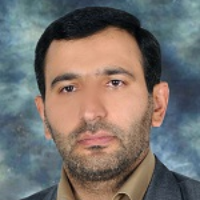Modeling and Simulation of Copper Biosorption Process in a Fixed Bed Column
In this research, the biosorption process of copper metal from industrial wastewater by Rhizopus Arrhizus has been modeled in a fixed bed column. The performances of the three isotherms of Langmuir, Freundlich, and BET were compared to calculate the adsorption rate. Based on the modeling results, the Freundlich model with a correlation coefficient of 0.974 showed better agreement with the experimental results than the other models. The highest agreement of Freundlich model with experimental data was obtained at k=0.991 and n= 0.8551. Then, the effect of the selected model parameters on the adsorption rate was investigated, and it was found that at a constant Freundlich coefficient, an increase in the power of the model enhances the available adsorption capacity for low solute concentrations. The effects of operating conditions in the column include volume flow, column diameter, column length, initial concentration, and adsorbent density on the adsorption rate were also investigated. In general, it can be stated that the modeling of biological processes for metal removal is one of the important tools in understanding the behavior of these processes with the least cost, and also the performance of the process can be evaluated at different operating conditions.
-
Catalytic Applications of Zeolites for Carbon Dioxide Conversion: A Review
Fatemeh Bahmanzadegan, *
Farayandno Magazine, -
The Effect of Microstructure on the Mechanical Properties of Devulcanized Waste Tires
Hamid Yazdani *, Hoora Fakhari,
Journal of Chemical and Petroleum Engineering, Dec 2023


